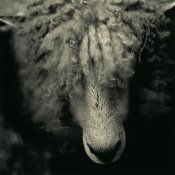puketronic
Member
- Joined
- Nov 15, 2011
- Messages
- 199
- Format
- 35mm
I standardized Tri-X and Rodinal for 120 film. I like it at 400 but sometimes when I push film the shadow details is a little lacking so I'm thinking of experimenting with HC110.
The best option is probably higher film speed or a speed-compensating developer, but I thought that maybe HC110 would help a little since a loss of film speed is reported from the users using Rodinal. I don't push that often so I figured that HC110 would be great alternative since it has a long shelf life. The lack of detail isn't so big of a deal many times but I'm wondering if I can do better with Tri-X before before moving onto higher film speeds.
The best option is probably higher film speed or a speed-compensating developer, but I thought that maybe HC110 would help a little since a loss of film speed is reported from the users using Rodinal. I don't push that often so I figured that HC110 would be great alternative since it has a long shelf life. The lack of detail isn't so big of a deal many times but I'm wondering if I can do better with Tri-X before before moving onto higher film speeds.
Last edited by a moderator:










 .
.

